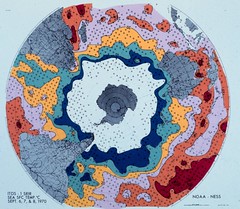Post Author: Bill Pratt
The NOAA has released a new report on global temperatures which indicates that there is a warming trend. Since few people will read the full report, NOAA prepared a synopsis of the findings that is only 10 pages long.
I want to do two things in this post. First, I want to review the contents of the synopsis to see what researchers have found. Second, I want to analyze some of the statements in the synopsis that are not objective statements of data, but political spin.
Here is an opening paragraph:
A comprehensive review of key climate indicators confirms the world is warming and the past decade was the warmest on record. More than 300 scientists from 48 countries analyzed data on 37 climate indicators, including sea ice, glaciers and air temperatures. A more detailed review of 10 of these indicators, selected because they are clearly and directly related to surface temperatures, all tell the same story: global warming is undeniable.
Notice the last phrase: “global warming is undeniable.” This kind of language is a tip-off that the authors are concerned to push an agenda forward. A strictly scientific report would have no need for repeating that the evidence is undeniable; they would just let the facts speak for themselves. It is also telling that many news outlets led with the “undeniable” phrase in their coverage of the report.
The synopsis goes on to highlight 10 indicators that best measure surface temperatures of the earth. These indicators are: air temp near the surface, humidity, glaciers, snow cover, temp over oceans, sea surface temp, sea level, sea ice, ocean heat content, and temp over land.
Seven of the indicators are going up and three of them are going down (snow cover, glaciers, and sea ice). Together, according to the report, they all point toward a warming trend.
One thing to note is that each of the 10 indicators contains data that covers different time periods. For example, data on air temperature at the surface (troposphere) only goes back to about 1960, whereas data on air temperature over land goes back to 1850. So, when the report says the past decade was the “warmest on record,” what they mean to say is that it is the warmest decade since 1960 (if you want to include all 10 indicators as part of the record). Remember that human civilization has been around for many thousands of years; 50 years seems like a small sample size, doesn’t it?
I would ask the authors why they chose to say “warmest on record” when they could have been more precise. Again, it seems that this language was clearly chosen for rhetorical impact.
More commentary on the NOAA synopsis in part 2….
